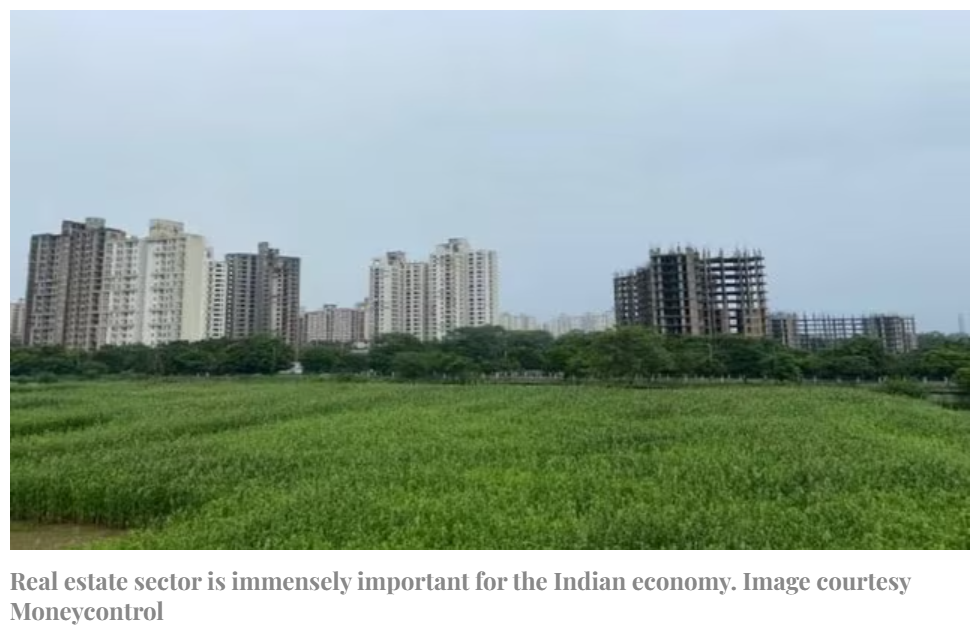In 2022, the building material industry achieved a significant milestone by reducing water consumption by 25 per cent.

The construction industry is currently undergoing a significant transformation, primarily driven by the urgent need for sustainability. According to a report by HDFC Securities, the building material industry is expected to grow at 8–12 per cent for the next 4–5 years. It will lead the industry to become more environmentally conscious, given the turmoil that our environment is going through. This pressing concern has prompted industry stakeholders to recognize the necessity of eco-friendly practices and embrace innovative solutions. Architects, builders, and manufacturers are increasingly joining forces to address this challenge. The government’s continued investment in infrastructure development and its commitment to making India a $5 trillion economy provide a strong foundation for sustained growth in this sector.
In 2022, the building material industry achieved a significant milestone by reducing water consumption by 25 per cent. The adoption of technologies such as sprayable Ready Mix Plaster not only conserved millions of gallons of water but also led to a remarkable 30 per cent increase in plastering efficiency. Addressing the long-standing issue of wastage, the industry witnessed a noteworthy 40 per cent decrease in plastering wastage due to the implementation of advanced technologies. This reduction not only positively impacted the environment but also underscored the industry’s commitment to optimizing its processes. Businesses involved in the production of spray plaster have experienced high revenue growth during the past few years. This growth, combined with the decrease in carbon emissions per square foot, demonstrates a paradigm shift in how the industry approaches sustainability. This transformation signals a promising direction for the future as it addresses environmental impact and embraces more eco-friendly practices.
Sustainability as the cornerstone
The commitment to sustainability is at the core of spray plaster production, where there is a keen focus on reducing the environmental impact and introducing innovations to achieve this goal.
Reducing water usage
A standout innovation in this industry is the advent of spray plaster. Unlike traditional plasters that require substantial amounts of water for curing, spray plaster possesses a unique self-curing property. This conserves significant amounts of water and guarantees optimal strength and durability. It is a testament to the synergy between sustainability and performance.
Minimising wastage
Wastage is a common challenge in plastering, often stemming from rebound loss. Spray plaster offers a practical solution to this issue. Reducing the need for additional water helps conserve resources, reduces waste and promotes energy-efficient building practices.
Local sourcing for a lower carbon footprint
Manufacturers have prioritized using locally available materials. This approach significantly reduces the carbon footprint associated with transportation and ensures a steady supply chain, fulfilling demand swiftly and efficiently. Supporting local economies while promoting sustainability is a win-win strategy for the eco-system.
Embodied energy and environmental impact
Embodied energy, or the total energy required to produce a product, is a key consideration. Modern plastering materials significantly reduce embodied energy throughout their lifecycle. Traditional plasters necessitate additional energy for curing, often in the form of water and heat. The industry is conserving water and precious energy resources by eliminating this need.
Recycling and waste reduction
Leading companies are deeply committed to creating innovative products that minimize waste and promote a sustainable economy. Manufacturers are also reducing their environmental footprint and contributing to a more sustainable future by repurposing materials that would otherwise end up in landfills.
Embracing renewable materials
The industry is increasingly embracing renewable resources, such as fly ash, a byproduct of coal combustion, which is incorporated into plaster materials. This approach decreases reliance on non-renewable materials and contributes to a circular economy where nothing goes to waste. It reflects the industry’s commitment to sustainability, which goes hand in hand with innovation.
Boosting building efficiency
One significant contribution of this transformation is enhancing the efficiency of buildings. Traditional plastering methods require a significant amount of water for curing, which, when eliminated by materials like spray plaster, conserves water during application and enhances overall water efficiency.
The spray plaster industry is making remarkable strides toward sustainability, durability, recycling, and using renewable materials. This industry is forging a more eco-friendly and sustainable future by reducing environmental impact, conserving resources, and promoting circular economy principles. The transformation in the industry is not just about creating robust building materials; it is about setting the stage for a greener and more sustainable tomorrow. Adopting innovative materials, committing to local sourcing, and using renewable resources are changing the construction landscape and contributing to a more sustainable and eco-conscious world.
The spray plaster category has recognized that sustainable practices and high-quality performance can co-exist and they are pioneering a future where construction is not just about building structures but also a more sustainable and environmentally conscious world. With these innovations, spray plaster is poised to lead the way in constructing a greener, more sustainable future.
Article Credit: firstpost